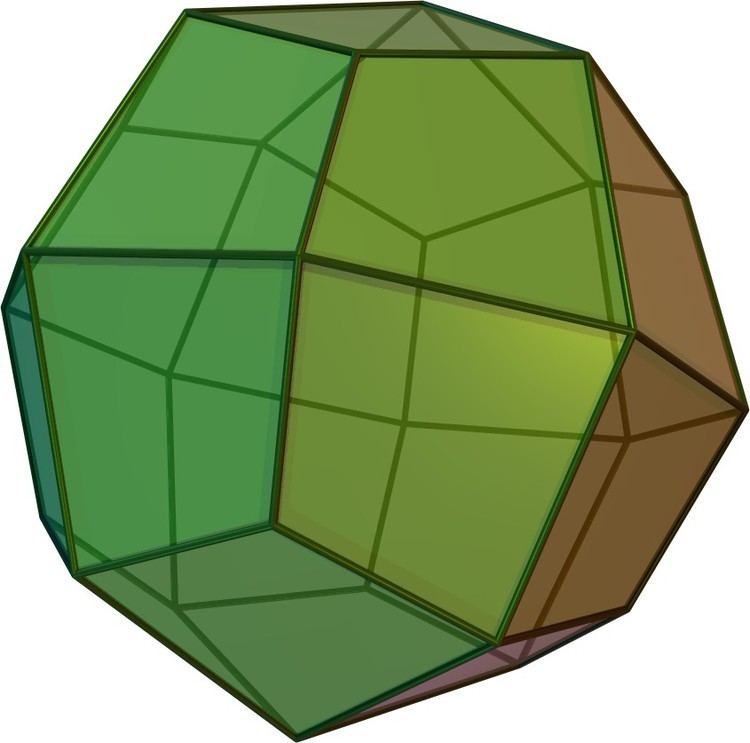 | ||
In geometry, a deltoidal icositetrahedron (also a trapezoidal icositetrahedron, tetragonal icosikaitetrahedron, and strombic icositetrahedron) is a Catalan solid which looks a bit like an overinflated cube. Its dual polyhedron is the rhombicuboctahedron.
Contents
Dimensions
The 24 faces are kites. The short and long edges of each kite are in the ratio 1:(2 − 1/√2) ≈ 1:7000129289300000000♠1.292893...
If its smallest edges have length a, its surface area and volume are
Occurrences in nature and culture
The deltoidal icositetrahedron is a crystal habit often formed by the mineral analcime and occasionally garnet. The shape is often called a trapezohedron in mineral contexts, although in solid geometry that name has another meaning.
Orthogonal projections
The deltoidal icositetrahedron has three symmetry positions, all centered on vertices:
Related polyhedra
The great triakis octahedron is a stellation of the deltoidal icositetrahedron.
Dyakis dodecahedron
The deltoidal icositetrahedron is topologically equivalent to a cube whose faces are divided in quadrants. It can also be projected onto a regular octahedron, with kite faces, or more general quadrilaterals with pyritohedral symmetry. In Conway polyhedron notation, they represent an ortho operation to a cube or octahedron.
In crystallography a rotational variation is called a dyakis dodecahedron or diploid.
Related polyhedra and tilings
The deltoidal icositetrahedron is one of a family of duals to the uniform polyhedra related to the cube and regular octahedron.
This polyhedron is topologically related as a part of sequence of deltoidal polyhedra with face figure (V3.4.n.4), and continues as tilings of the hyperbolic plane. These face-transitive figures have (*n32) reflectional symmetry.
